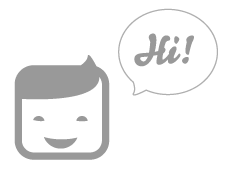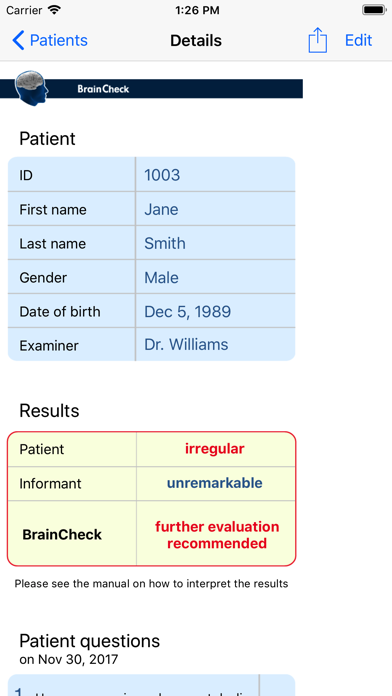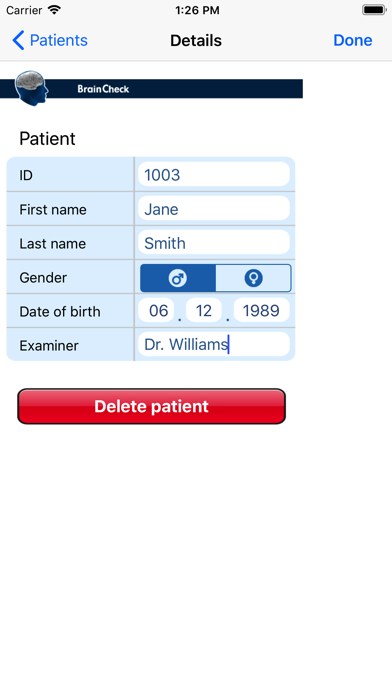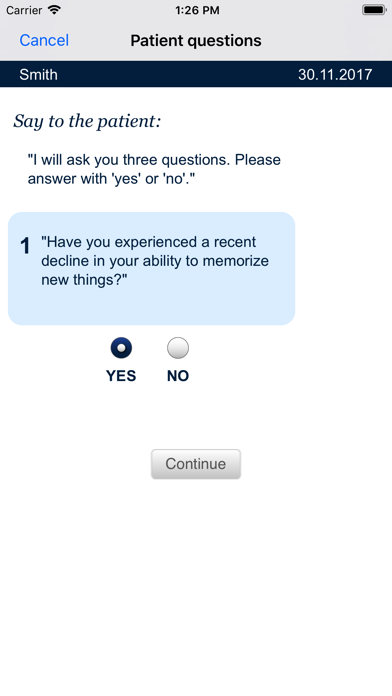App World
My stream

BrainCheck
The BrainCheck is a screening tool which can be used during the routine medical examination to help determine ...
Expired $ 10.990 $ 2.990

Store review
The BrainCheck is a screening tool which can be used during the routine medical examination to help determine whether a patient may have cognitive dysfunctions which require further diagnostic steps.
The BrainCheck was designed to be used in the following situations:
- The patient spontaneously complains about cognitive problems;
- A family member or friend remarks on the patient’s cognitive problems;
- You as the treating physician suspect cognitive problems.
The BrainCheck is composed of three independently administered tests. The results of all three tests are analyzed with a validated algorithm to provide a global assessment indicating whether an individual’s cognitive functioning is irregular and should be examined in more detail, e.g. in a Memory Clinic. The BrainCheck administration takes only a few minutes, and includes:
- 3 patient questions;
- Clock Drawing Test;
- 7 informant questions.
The BrainCheck algorithm was developed and validated in a multi-center study of a group of healthy participants and memory clinic patients. The BrainCheck is not a diagnostic instrument. When changes in mental functioning are suspected, it can be used to determine whether changes in cognition may have occurred. Only a thorough interdisciplinary examination conducted by the appropriate specialists can diagnose cognitive dysfunction in the individual patient.
The BrainCheck can be administered in the following languages: German, English, French, Italian, and Spanish. Moreover, future updates will provide the patient and informant questions and Clock Drawing Test form in additional languages (e.g., Turkish, Albanian, Portuguese) so that the BrainCheck examinations can be administered even if the examiner has only limited mastery of the foreign language.
The patient examination (3 questions plus Clock Drawing Test) and the informant questionnaire data can be analyzed separately or in combination to determine whether additional examinations are indicated or whether no further examinations are indicated
(= watchful waiting). The combination of both the patient and informant data provides the most reliable result.
In a study of 70 healthy individuals (mean (± standard deviation) age = 77.2 ± 8.9 years; education = 12.5 ± 2.9 years; 29% female), 21 patients with Mild Cognitive Impairment (MCI) (age = 75.3 ± 7.5 years; education = 11.6 ± 2.1 years; 57% female), 86 patients with probable dementia due to Alzheimer’s disease (mean (± standard deviation) age = 78.4 ± 6.3 years; education = 11.7 ± 2.6 years; 51% female) and six patients with a major depression (mean (± standard deviation) age = 68.2 ± 11.4 years; education 11.2 ± 1.9 years; 67% female), the following sensitivities (i.e. % of actual patients who received “further examination” scores) and specificities (i.e., % of healthy control participants with “watchful waiting” scores) were achieved with the BrainCheck:
3 questions plus Clock Drawing Test: sensitivity 85,8%, specificity 74,3%, discriminatory power (correct classification) 79,9%;
Informant questions: sensitivity 81,4%, specificity 75,7%, discriminatory power (correct classification) 78,6%;
BrainCheck (combination): sensitivity 97,4%, specificity 81,6%, discriminatory power (correct classification) 89,4%;
The patient’s data can be managed and saved within the app. The required forms (i.e., form for the Clock Drawing Test and informant questionnaire, in cases where these answers cannot be entered directly into the app) can be saved as a pdf document and printed using the app.
A report in pdf format describing the administered tests, including the photographed Clock Drawing Test result, can be created using the export function. This report can be exported to a computer using iTunes or can be printed and/or sent to an email address directly from the BrainCheck.
Size
11.2 MB
Last update
Nov. 27, 2019








 Facebook
Facebook Twitter
Twitter Google plus
Google plus